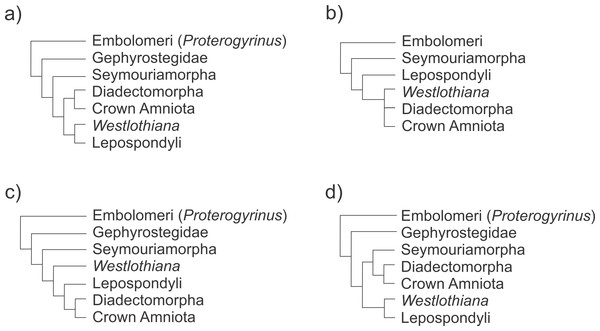
The hypotheses about the origin of the primitive amniotic tarsus are very speculative. Early studies argued that the origin of the astragalus, one of the largest proximal bones in the tarsus of basal amniotes, was produced by either the fusion of two, three, or even four of the original tarsal bones, the intermedium, the tibiale and the proximal centralia (c4 and c3), or that the intermedium alone transforms into the primitive astragalus. More recent studies have shown that the structure of the tarsus in Captorhinus supports the former hypothesis about a fusion of the intermedium, the tibiale, the proximal centrale (c4) and eventually c3, producing a purportedly multipartite structure of the amniotic astragalus, but the issue remained contentious. Very well preserved tarsi of the Early Permian aquatic amniote Mesosaurus tenuidens Gervais, 1864–1865, which represent the most complete ontogenetic succession known for a basal amniote (the other exceptional one is provided by the Late Permian diapsid Hovasaurus boulei Piveteau, 1926), suggest that there is more than one ossification center for the astragalus and that these fuse during late embryonic stages or maybe early after birth. A non-hatched Mesosaurus in an advanced stage of development shows that the tarsus is represented by a single bone, most probably the astragalus, which seems to be formed by the suturing of three bones, here interpreted as being the intermedium, the tibiale, probably already integrated to the c4 in an earlier stage of the development, and the c3. An amniote-like tarsal structure is observed in very basal Carboniferous and Permian tetrapods such as Proterogyrinus, Gephyrostegus, the diadectids Diadectes and Orobates, some microsaurs like Tuditanus and Pantylus and possibly Westlothiana, taxa that were all considered as true amniotes in their original descriptions. Therefore, the structure of the amniotic tarsus, including the configuration of the proximal series formed by the astragalus and the calcaneum, typically a pair of enlarged bones, could have been established well before the first recognized amniote walked on Earth. Accordingly, the tarsus of these taxa does not constitute specialized convergences that appeared in unrelated groups, they might be instead, part of a transformation series that involves taxa closely related to the early amniotes as some hypotheses have suggested.
from #MedicinebyAlexandrosSfakianakis via xlomafota13 on Inoreader http://ift.tt/1OzJnrs
via
IFTTT
Δεν υπάρχουν σχόλια:
Δημοσίευση σχολίου